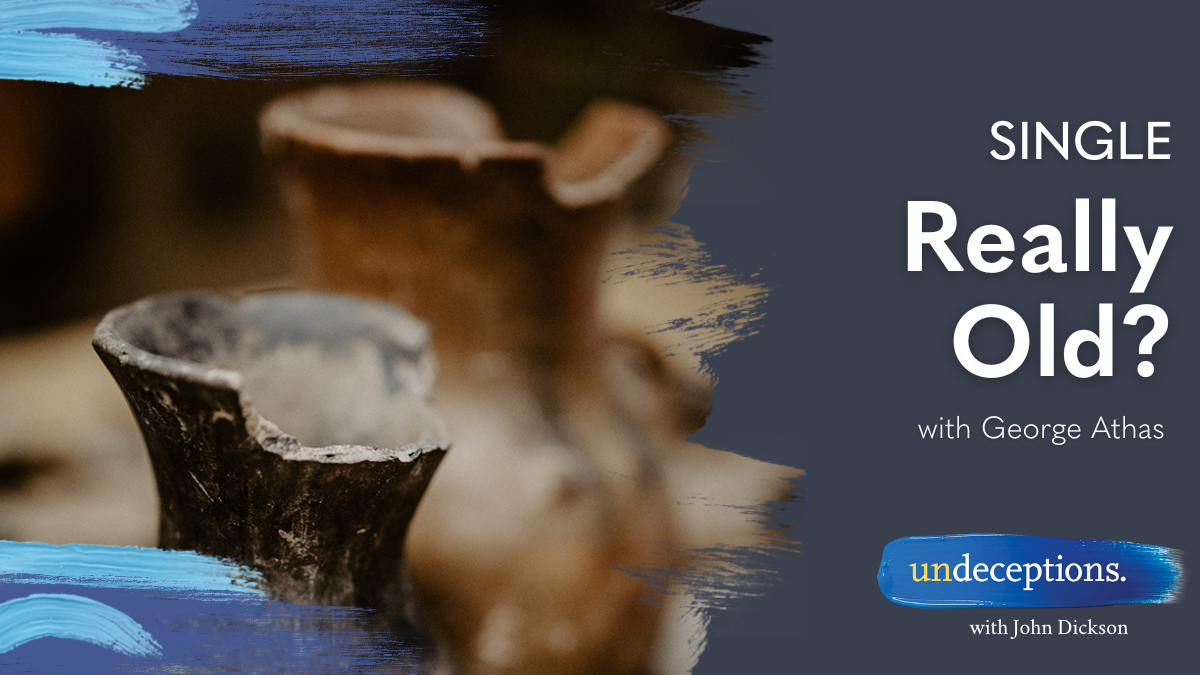By John Dickson
The popular French philosopher Michel Onfray has argued that Jesus was more myth than history. Among his reasons for this is that someone like Jesus would not have been crucified. “History again bears witness,” Onfray writes in his Atheist Manifesto, “at that time Jews were not crucified but stoned to death.
Onfray goes on to say that even if Jesus had been crucified—which he wasn’t—there’s no way he would have been properly buried in a tomb, like the gospels say. He’s quite adamant about it. “There was no question,” he writes, “of bodies being laid to rest in tombs. Fabrications.”
It’s strong stuff.
But it’s pretty wide of the mark.
Every ancient historian knows that Jews were among the most crucified people in antiquity. The Dead Sea Scrolls and Josephus both report one incident where 800 Pharisees were crucified on one day, while their wives and children were forced to look on.
So, we know Jewish crucifixions took place, and that crucifixion victims were sometimes—not always, but sometimes—buried in tombs.
The first century writer Josephus also tells us that during the siege of Jerusalem in AD70 the Romans crucified hundreds of Jews a day while taking the city.
And, actually, our only solid archaeological remains of a crucifixion victim – a male heel bone with a huge nail still in place – were discovered in a 1st Century Jewish tomb. We even know the Jews name – Yehoanan – because it’s written on his burial box. Yehoanan was crucified and properly buried—just like the Gospels say Jesus was.
So, we know Jewish crucifixions took place, and that crucifixion victims were sometimes—not always, but sometimes—buried in tombs.
On the face of it, the early Christian accounts are plausible as history.
But what if Jesus’s crucifixion didn’t quite work? What if he didn’t actually die?
Here’s another Easter myth, and it comes in all shapes and sizes:
- Jesus didn’t die on the cross, but was rescued by his followers.
- Jesus’ followers bribed Pontius Pilate to let them take Jesus down from the cross before he died.
- Jesus just lost consciousness due to his injuries – a temporary coma – and the coolness of the tomb revived him.
- Finally, Jesus swapped places with John (who was wearing exactly the same loin cloth in a Leonardo da Vinci painting) and slipped into the crowd dressed as a Jewish woman.
Ok, I made that last one up.
But these sorts of ideas are all collectively known as the ‘Swoon Theory’. Their basic idea is: Jesus didn’t really die.
So let’s review what our earliest accounts (the four gospels) record:
- Jesus was imprisoned and probably sleepless as he underwent a midnight trial.
- He was then beaten at various points by Roman guards
- He was scourged – basically whipped with pieces of bone, glass or metal built into the leather
- He was forced to carry his cross for some distance
- He was then crucified
- One of the Gospels says he was stabbed in the torso with a Roman spear.
So how effective was crucifixion as a death penalty?
“It’s thought that there are a number of effects of crucifixion and that different people who were crucified might have died from different elements of the process,” says Dr Melanie Lovell, Associate Professor of the University of Sydney, and an expert in Palliative Care (she specialises in pain assessment and management, particularly among the dying).
I asked her to read a report published by the Journal of the American Medical Association, ‘On the Physical Death of Jesus Christ’, and help make sense of it.
“People in the process had nails placed throughout their wrist and into the feet and were hung by their hands and feet on the cross,” said Dr Lovell. “It was customary prior to crucifixion for people to be flogged and that was done with a, um, uh, I think it was called a flagrum, a leather tool that had embedded in it pieces of metal and bone and people were stripped naked and actually whipped on both sides of the body, down the back, the buttocks and into the legs. They would’ve lost a really considerable amount of blood. So that by the time they then carried their cross for a period of time and then were hung on the cross, were already suffering the effects of a significant amount of blood loss and exhaustion.”
Being hung on the cross then also had a number of effects, says Dr Lovell.
“Overall it’s a horrible, horrible way to die.”
“People were there for a very long time before they died. As far as we understand it could go on for hours and up to days. Over time, people would become increasingly dehydrated.
“There is some discussion about the effects on respiration and Edwards wrote in the Journal of the American Medical Association in 1986 about the effect particularly on exhalation. Because people were hung from the cross, they were no longer able to passively exhale, but needed to push up through the feet that the nail was through in order to get enough purchase to exhale. And so the volume of respiration would become increasingly small, as the person became more and more exhausted and the levels of carbon dioxide would rise. Eventually they would become asphyxiated.
“So, people would suffer dehydration and blood loss. They would have difficulty with respiration. There are a number of other effects including that people would be at the mercy of animals and birds and unable to defend themselves. And the wounds that they had would be at risk of becoming infected.
“Overall it’s a horrible, horrible way to die.”
But what about the evidence that Jesus himself really died?
“There were many eye witnesses,” says Dr Lovell.
“So we do know that he was whipped for a long time prior to going on the cross. We know that when he was walking the four kilometers from where he was whipped to the cross that he was so weak he could not carry his own cross. We know that he was offered a drink, which he declined. We know that he had made a number of utterances from the cross.
“At the end, when it was thought that he had died, he was pierced with a spear through the right side of the chest up and into the heart. And it was seen that blood and water flowed. Now that may have been fluid from around the lungs, around the heart and blood from the heart itself.
And that in itself is a fatal wound and particularly in his circumstances, that was good evidence that in fact, he had died.”
The evidence is in: Jesus was real, he was crucified and buried, and he really did die. This Easter, we can tick those off the list.
But that’s not the end of the controversy, of course.
Why did Jesus die? Was he really trying to atone for sins, or is that just made up by later Christians? And, of course, the big obvious question is: What can historians say about the resurrection of Jesus?
Read the answers to those questions in the links.










































